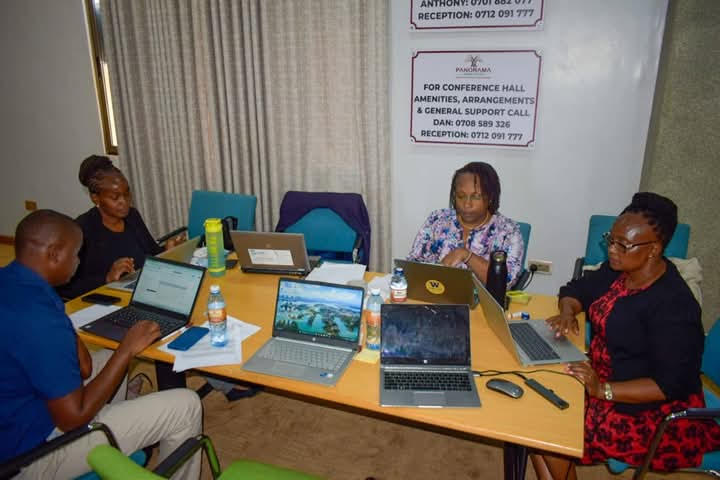Nakuru County Government has put into action a plan to revise nutritional programmes and policies to bolster the health and wellbeing of the population through the implementation of a Sh 2.55 billion County Nutrition Action Plan (CNAP).
Chief Officer for Public Health, Ms. Joyce Ncece, said CNAP, which was developed with financial and technical support from Nutrition International, county administration, and nutrition stakeholders, was guiding the devolved unit in scaling up nutrition interventions.
“The County’s Department of Health has been implementing a Nutrition Financing Agreement since August 2021 in partnership with Nutrition International (NI). As this phase of the agreement nears completion, we are glad that we have introduced nutritional community-based management, supplementation feeding programmes for pregnant women and capacity building of healthcare workers to offer nutrition services in all health facilities,” stated the Chief Officer.
Ms. Ncece indicated that the initiative was aimed at mobilising additional domestic resources to scale up high-impact, low-cost nutrition interventions outlined in the County Nutrition Action Plan that have since been implemented over the years.
Speaking at the close of a two-day review and planning meeting hosted by the Department of Health to assess progress and develop a comprehensive project report to guide future collaborations with NI and other nutrition partners, the Chief Officer acknowledged that malnutrition had both health and economic consequences and undermines basic human rights.
The Official said Governor Susan Kihika’s administration was targeting to reduce malnutrition by 60 percent and 58 percent in children under five and expectant women respectively as outlined in the County 2020-2025 CNAP.
Other interventions by the county towards addressing malnutrition are provision of affordable healthcare services and medical and nutrition commodities and supplies to hospitals, added Ms Ncece.
“Improved nutrition is expected to contribute to economic productivity and development and reduce poverty,” said the Chief Officer.
The chief officer revealed that the county government was also supporting various programmes aimed at ensuring that the target population was nutritionally safe and that there was enough of nutrition-rich food, which was affordable and accessible to the low-income consumers and that there was productivity and respect for biodiversity and ecosystems.
She stated that to ensure sustainability in the interventions, plans were underway to strengthen the County’s partnerships with Nutrition International beyond the stated financing period.
According to the official, while people have been emphasising more on the need to eat a well-balanced diet, they have ignored important dietary aspects like minerals and trace elements, which include traces like zinc, magnesium, calcium, and potassium, among others.
“Good nutrition is vital for all people, especially vulnerable groups, including children, lactating mothers, the aged and the sick. There is a need to look at food from not only an aspect of food security but also nutritional security,” observed Ms. Ncece.
Most people, she added, depend on certain types of food because of culture and availability, while they fail to consider the nutritional value of what they consume.
While noting that climate change, poverty, and lack of innovation were some of the top challenges to food and nutritional security, Ms Ncece urged stakeholders to work with research organisations and academic institutions to address food insecurity and malnutrition adding that earlier research had revealed a direct link between nutrients-deprived soils and malnutrition.
The CNAP programme has incorporated the priorities of the Sh117 billion Nakuru County Integrated Development Plan 2023-2027 and the County Health Sector Strategic and Investment Plan 2023-2026. It lays out actions for resource mobilisation, and coordination and implementation of nutrition interventions with health and other key sectors. The plan has clearly defined targets and includes monitoring and accountability frameworks.
Nutrition International supported the development of the CNAP through its Nutrition Technical Assistance Mechanism’s Technical Assistance for Nutrition project, funded with UK aid from the United Kingdom government. Other partners who offered technical support include the Ministry of Health’s Nutrition and Dietetics Unit, United States Agency for International Development (USAID), Afya Uzazi and Egerton University.
Separately, the Nutrition International Kenya Country Director Martha Nyagaya regretted that one out of every three people in the world is malnourished, with adolescent girls and women being the most vulnerable due to biological and sociological aspects.
The solution to undernutrition, the Director said, lies in low-cost intervention mechanisms which need to be scaled up by actively involving individuals, families, and communities.
Nutrition International, she said, had been working in Sub Saharan Africa in the past 25 years fighting malnutrition. In Kenya, it is working in 16 counties in reducing the cases, including Nandi, Makueni, Vihiga, and Busia.
According to statistics from the devolved unit’s Department of Health, of the 275,921 children under five living in the county, an estimated 27.9 percent are stunted, way above the national level of 26 percent; a further 5 percent are wasted, while 10.2 percent are underweight.
According to the Kenya Demographic Health Survey (2014), 75,439 children in Nakuru County were stunted while malnutrition causes an estimated 17,033 cases of low birth weight and underweight annually within the devolved unit.
The interventions outlined in CNAP are projected to result in the aversion of 1,473 child deaths, prevention of 22,453 cases of anemia in pregnant women, and 4,666 cases of anemia avoided in adolescent girls. Over the period, prevalence of stunting is expected to come down by approximately 38 percent while cases of iron deficiency anemia in pregnant women drop by 58 percent.
Official records from County Department of Health indicate that malnutrition costs the health system an estimated Sh175.6 million per year and that the menace has reduced the education performance of learners, with Nakuru recording an average annual 333 cases of class repetitions and dropouts due to stunting.
Absenteeism occasioned by stunting in the devolved unit according to the records was costing the education sector and affected families Sh4.07 million annually.
By Jane Ngugi and Patience Moraa





